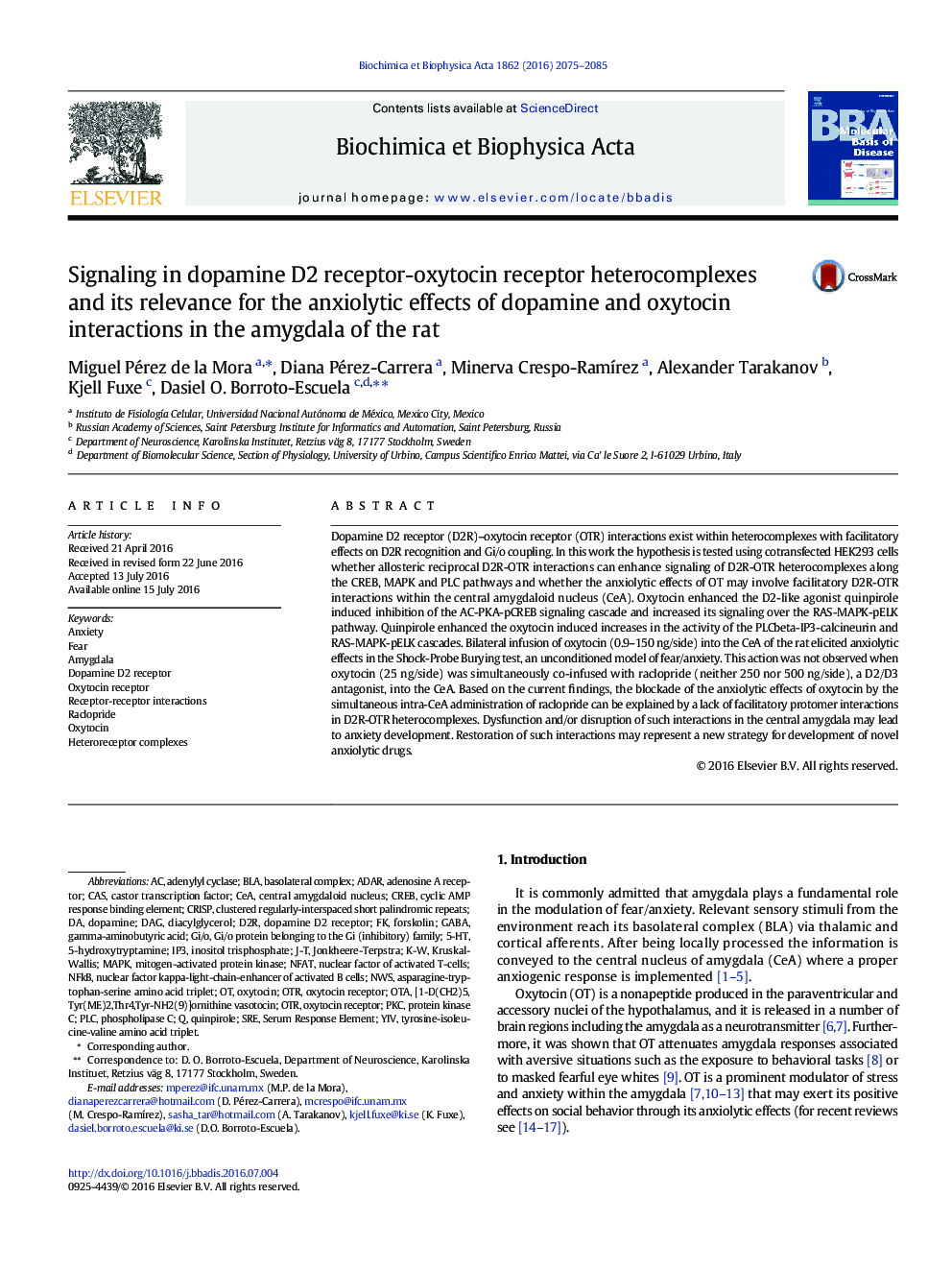| Article ID | Journal | Published Year | Pages | File Type |
|---|---|---|---|---|
| 1904449 | Biochimica et Biophysica Acta (BBA) - Molecular Basis of Disease | 2016 | 11 Pages |
Abstract
Dopamine D2 receptor (D2R)-oxytocin receptor (OTR) interactions exist within heterocomplexes with facilitatory effects on D2R recognition and Gi/o coupling. In this work the hypothesis is tested using cotransfected HEK293 cells whether allosteric reciprocal D2R-OTR interactions can enhance signaling of D2R-OTR heterocomplexes along the CREB, MAPK and PLC pathways and whether the anxiolytic effects of OT may involve facilitatory D2R-OTR interactions within the central amygdaloid nucleus (CeA). Oxytocin enhanced the D2-like agonist quinpirole induced inhibition of the AC-PKA-pCREB signaling cascade and increased its signaling over the RAS-MAPK-pELK pathway. Quinpirole enhanced the oxytocin induced increases in the activity of the PLCbeta-IP3-calcineurin and RAS-MAPK-pELK cascades. Bilateral infusion of oxytocin (0.9-150Â ng/side) into the CeA of the rat elicited anxiolytic effects in the Shock-Probe Burying test, an unconditioned model of fear/anxiety. This action was not observed when oxytocin (25Â ng/side) was simultaneously co-infused with raclopride (neither 250 nor 500Â ng/side), a D2/D3 antagonist, into the CeA. Based on the current findings, the blockade of the anxiolytic effects of oxytocin by the simultaneous intra-CeA administration of raclopride can be explained by a lack of facilitatory protomer interactions in D2R-OTR heterocomplexes. Dysfunction and/or disruption of such interactions in the central amygdala may lead to anxiety development. Restoration of such interactions may represent a new strategy for development of novel anxiolytic drugs.
Keywords
5-HTNWsHeteroreceptor complexesADARNFkBSREGi/oRacloprideforskolinPKCPLCIP3D2RKruskal-WallisInositol trisphosphateCREBOTANFAT5-hydroxytryptamineOTRCASBLACeAMAPKadenylyl cyclaseAmygdalagamma-aminobutyric acidAnxietyoxytocinCRISPFearDopaminediacylglycerolDAGnuclear factor of activated T-cellsSerum response elementnuclear factor kappa-light-chain-enhancer of activated B cellsphospholipase CBasolateral complexcentral amygdaloid nucleusProtein kinase Cmitogen-activated protein kinaseQuinpiroleGABAoxytocin receptordopamine D2 receptor
Related Topics
Life Sciences
Biochemistry, Genetics and Molecular Biology
Ageing
Authors
Miguel Pérez de la Mora, Diana Pérez-Carrera, Minerva Crespo-RamÃrez, Alexander Tarakanov, Kjell Fuxe, Dasiel O. Borroto-Escuela,
